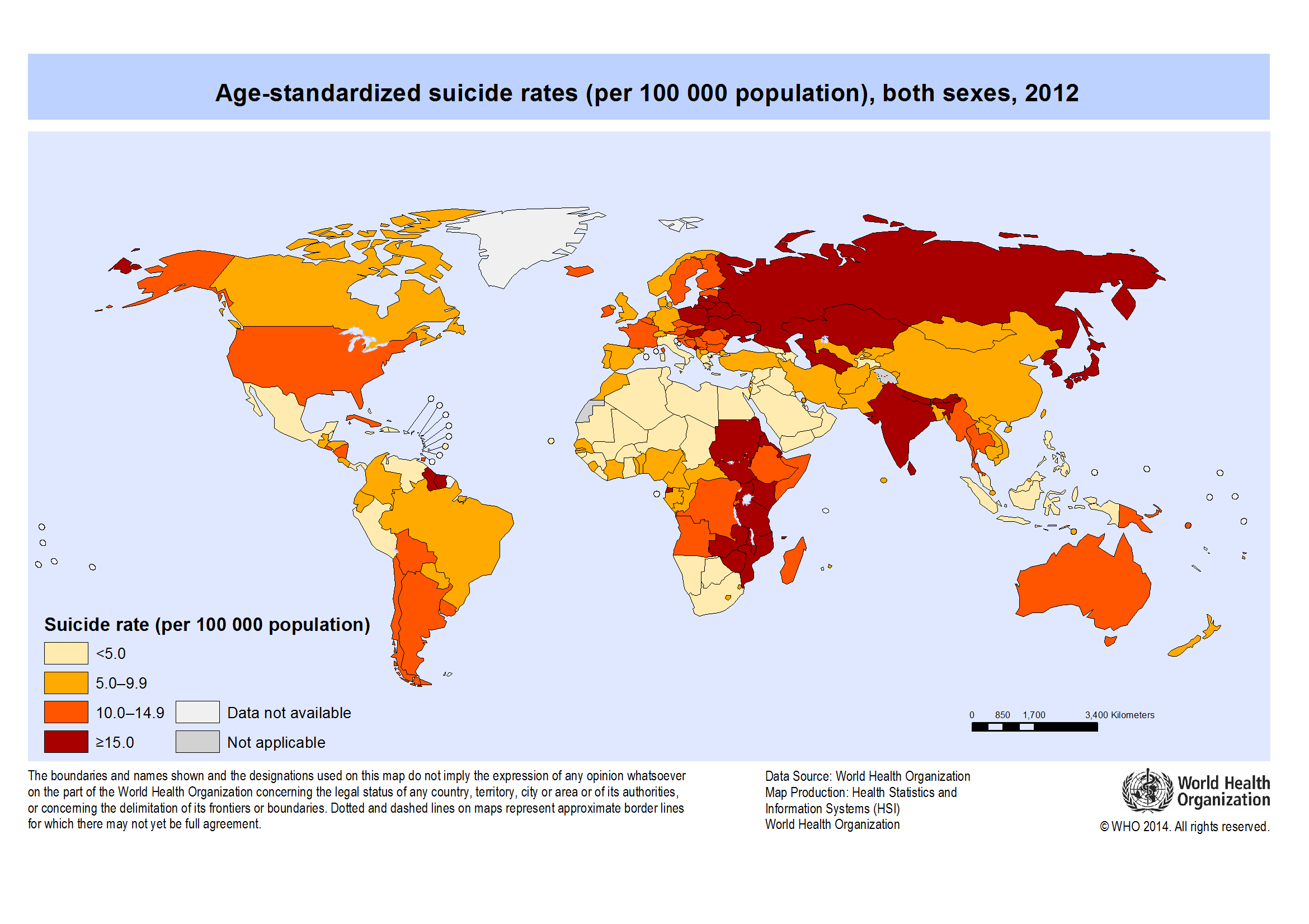WHO: Someone commits suicide every 40 seconds
MANILA, Philippines – An alarming report by World Health Organization (WHO) says, somebody commits suicide every 40 seconds.
Psychology Today defines suicide as a tragic event with strong emotional repercussions for its survivors and for families of its victims. For the past years, suicide rates all over the world have risen, including in the Philippines. Data from the National Statistics Office noted that in the Philippines, the suicide rate from 1984 to 2005 went up from 0.46 to seven out of every 200,000 men; up from 0.24 to two for every 200,000 women. While the figures might seem insignificant compared with those from neighboring countries that recorded the highest suicide rates, the increase in numbers is noticeably high.
It is a common misconception that suicides are a Western and developed country phenomena. The truth is, it is a major global health problem that occurs in every part of the world.
The WHO analyzed 10 years of research and data on suicide from around the world, involving 172 countries. It was found out that:
- Around 800,000 people kill themselves every year.
- Southeast Asia made up over a third of the annual rate.
- It was the 15th leading cause of death for 2012 all over the world; second among young people, aged 15 to 29.
- Those over 70 were the most likely to take their own lives.
- Seventy five percent of global suicide occurred in low- and middle-income countries in 2012.
- In richer countries, three times as many men as women die by suicide.
- The most suicide-prone countries were Guyana (44.2 per 100,000), followed by North and South Korea (38.5 and 28.9 respectively).
- The most frequently used methods globally are pesticide poisoning, hanging and firearms, but jumping from buildings is a common method in highly urbanized areas in Asia.

WHO claimed that the strongest risk factor for suicide are mental disorders such as alcoholism, depression, personality disorder or schizophrenia, and some physical illnesses, such as neurological disorders, cancer, and HIV infection. WHO also warned that media reporting of suicide is also a factor as the risk of viewers copying the behavior increases when suicide incidents are being sensationalized. A scientist in the WHO's Department of Mental Health and Substance Abuse, Alexandra Fleischmann, told that there is a link between the way in which suicides are reported in the media and acts that are committed thereafter.
The WHO aims to reduce the rate of suicide by at least 10 percent by 2020. Despite the staggering statistics, only 28 countries have policies that aim to reduce suicide rates. It is encouraged that all governments should set up national prevention plans such encouraging early identification and management of people who abuse drugs and people with mental illness. Doing so is a major challenge especially in the case of low-income countries where budget is tight and people are more vulnerable to a string of pressures because of poverty.
In spite of the challenge, WHO Director of Mental Health and Substance Abuse Shekhar Saxena said there also is much more that communities can do to provide support for vulnerable people. He said society can do more to provide support to them at a moment of great distress.
WHO chief Margaret Chan added in the landmark report that suicide is preventable and it is a problem that is needed to be addressed in every part of the world.
"This report encourages countries to continue the good work where it is already ongoing and to place suicide prevention high on the agenda, regardless of where a country stands currently in terms of suicide rate or suicide prevention activities," she added.
The WHO statistics have been highlighted to coincide with World Suicide Prevention Day on September 10.



















